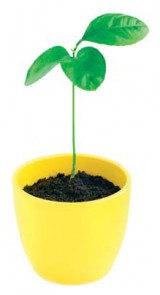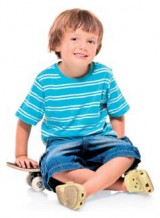Sue Cowley shares four ways to put pupils in a positive frame of mind for learning...
 This game is a fun, active way to get the children thinking about life processes and living things.
This game is a fun, active way to get the children thinking about life processes and living things.
• Take your class into an open space. Bring along a variety of items, some living and some that aren’t – for instance, a potted plant, a snail, a spoon, a plastic toy.
• Explain to the children that you’re going to show them the objects. For each one, the pupils must decide whether it’s a living thing or not.
• If they think it’s living, they run to the right side of the room; if they think it’s not living, they run to the left.
• Extend this activity by including some items that were once alive – for instance, a leather bag, some cotton wool, a sponge, a tree branch. When they see a ‘once living’ item, the children should stay still.
 Capture your children’s attention with this enjoyable start to a lesson, demonstrating the effect of heating and cooling on certain materials.
Capture your children’s attention with this enjoyable start to a lesson, demonstrating the effect of heating and cooling on certain materials.
• Before the lesson, gently melt various food stuffs (place them on a radiator or in the sunshine): a wrapped bar of chocolate, a wrapped ice cream, a wrapped packet of butter.
• Explain to the children that you’ve brought along some treats to share with them, and you have them in your bag.
• Bring the ‘treats’ out, expressing surprise that they’re a bit soft and squidgy – what a shame, you can’t hand them out! Quiz the class: what has happened to them?
• Identify the effect of heat on these foods: what can we do to get them back to normal? Will we be able to get them back to normal before the end of the lesson!
You can find interactive ICT games on the BBC website: http://www.bbc.co.uk/ schools/scienceclips
 Use this challenge to get your children thinking about how forces work.
Use this challenge to get your children thinking about how forces work.
• You’ll need a skateboard for this activity. Ask for a volunteer to come to the front to stand on the skateboard.
• Ask a second volunteer to come to the front and move the pupil on the skateboard. Highlight the terms ‘push’ and ‘pull’ as these movements are used.
• Now, challenge the class to move the pupil on the skateboard, but this time they’re not allowed to touch them. Split the class into small groups to discuss it.
• Come back together to share your ideas. In the past I’ve heard suggestions ranging from using a giant fan to explosives!
• Encourage the children to work out what all the successful suggestions have in common (i.e. that they put a force to work to create movement in the opposite direction).
• Now demonstrate the easiest method of all: ask your volunteer on the skateboard to start to swing their arms. Gradually, the skateboard will begin to move from side to side. To enhance the effect, you can give your pupil a weight to swing.
 Use this surprise start to a lesson to engage your children’s attention. This activity leads really well into a more detailed analysis of what makes a fair test.
Use this surprise start to a lesson to engage your children’s attention. This activity leads really well into a more detailed analysis of what makes a fair test.
• Before the pupils arrive, put a cup of cold tea or coffee on your desk, set in the middle of a tray with a lip around the edge.
• You will also need three different porous objects – for instance, a towel, some kitchen roll and some tissue paper.
• Gather the class together and explain you’re going to be exploring the question ‘What makes a fair test?’
• Start to brainstorm ideas with your pupils about the kind of things they should consider. As you do so, ‘accidentally’ knock your cup of tea over and express your annoyance – “Oh no, now look what I’ve done!”
• Show the pupils the three possibilities for mopping up your spillage. Take a vote on which will work best – introduce the word ‘prediction’.
• Challenge the class: how can we check that this prediction is right? Get the children to devise a ‘fair test’ to assess which material will work best.
Visit suecowley.co.uk for more ideas.
Why every child should feel at home in an art gallery
Ace-Art-And-Design
How Financial Education Helps Children
Ace-Classroom-Support
Should you let educational researchers into your classroom?
Ace-Classroom-Support
